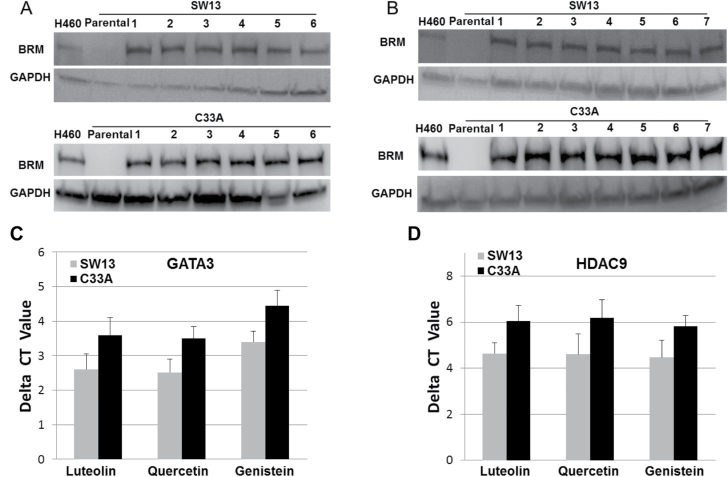Fig. 1.
(A) demonstrates the induction of BRM protein in the BRM/BRG1-deficient cell lines, SW13 and C33A, following 72-h treatment with 3 µM of flavonoids selected from each of the known six flavonoid structural groups [1: Luteolin (flavone), 2: Quercetin (flavonol), 3: Genistein (isoflavone), 4: Hespiridin (flavanone), 5: EGCG (flavanol/catechins) and 6: Delphinidin (anthocyanins)]. H460 cell line was used as the positive control and GAPDH was used as the loading control. (B) illustrates the induction of the BRM protein in the SW13 and C33A cell lines after 72-h treatment with ~0.9 μg of extract/ml of each naturally occurring food extract (1: Broccoli, 2: Hibiscus, 3: Celery, 4: Cinnamon, 5: Turmeric, 6: Green tea and 7: Soybean). H460 cell line was used as the positive control and GAPDH was used as the loading control. (C) shows the decrease in the level of GATA3 mRNA following treatment with Luteolin, Quercetin or Genistein in the BRM/BRG1-deficient cell lines, SW13 and C33A for 48h, as measured by qPCR. (D) shows the decrease in the level of HDAC9 mRNA following 48-h treatment with Luteolin, Quercetin or Genistein in the BRM/BRG1-deficient cell lines, SW13 and C33A, as measured by qPCR.

